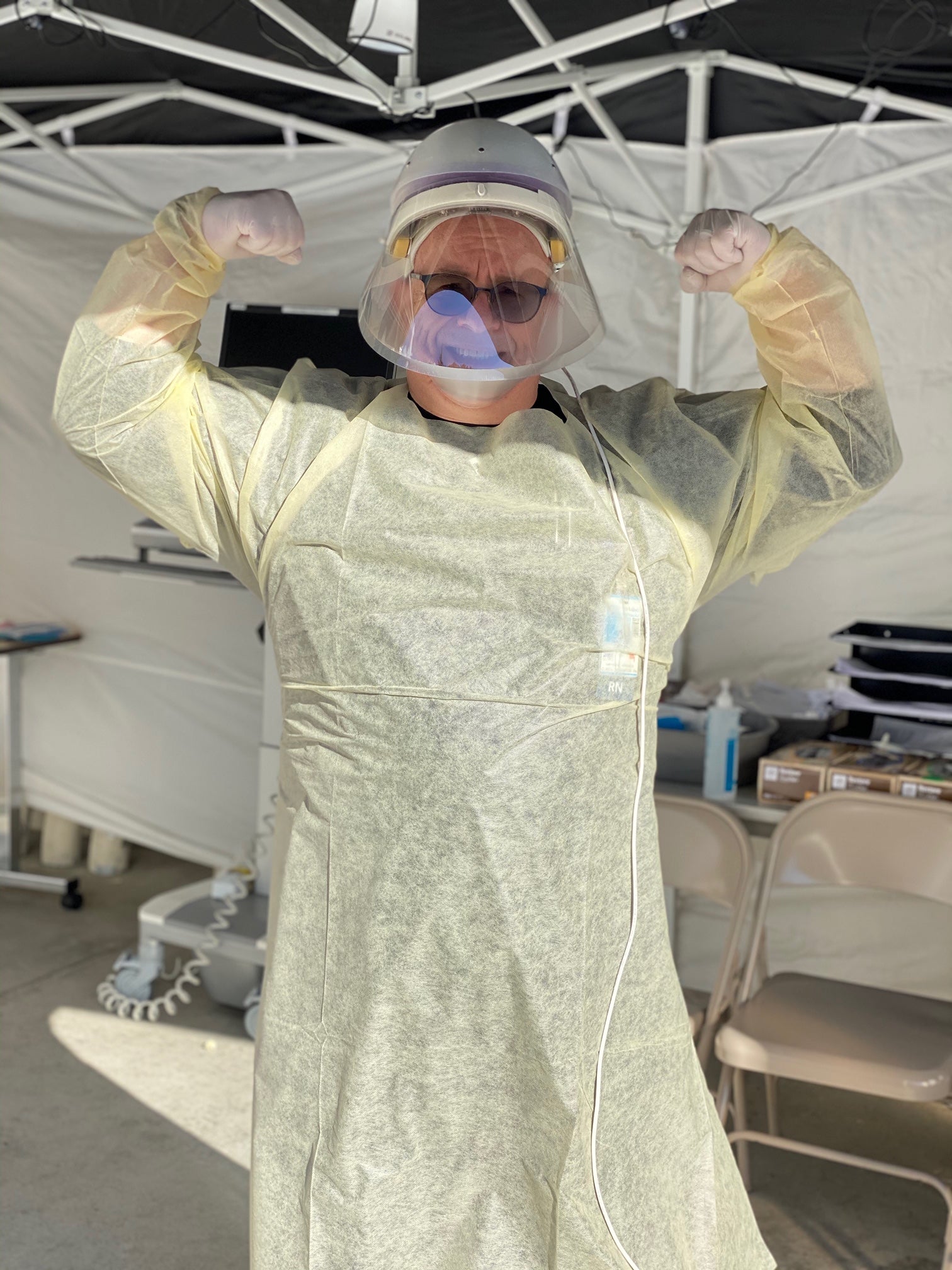– Story by Angela Fairbanks, content writer for the School of Nursing
One out of every six elementary school-aged children shows signs of a treatable mental illness; looking ahead to middle school and high school, that number is one in ten. Joe Greene, a nursing doctoral student at Boise State, has spent the past three years developing new ways to provide better, faster mental health care for children in his community.
Greene is completing his degree remotely from Los Angeles county, California, where 22.3% of residents live in poverty, the highest of any area in the state. Nearly half a million of those impoverished residents are children; these children are twice as likely than the national average to develop a mental illness. In the most extreme cases, higher poverty rates at the county level are associated with higher suicide rates among children 5 to 19 years old, as found by Hoffman et al. in the Journal of the American Medical Association.
It’s not uncommon for family members to bring a child who shows signs of hurting themselves or others to the nearest hospital emergency department. Sometimes, a school resource officer or other mandatory reporter will bring them in if an incident occurs at school. Most emergency departments are not equipped to provide the best type of care to these pediatric patients, defined as anyone 17 or under, Greene said.
“We cannot care for them using the same models we use for a trauma patient, even though they’re coming in through the emergency department. We have formal procedures for heart attacks, for sutures, for broken bones, but we don’t have that for mental crises yet.”
A three-part plan for pediatric care
Pediatric patients, defined as anyone 17 or under, may show symptoms differently and have different needs than their adult counterparts. Greene is implementing his three-part plan at a hospital in Los Angeles county: involve a mental health specialist, preemptively reserve emergency department resources for these patients, and make sure the nurses know how to manage the process. Now, patients coming to the emergency department in psychological distress can meet with a psychiatrist upon admission using telehealth technology as part of a partnership with Aligned Telehealth. A licensed psychiatrist can more effectively assess the patient’s state and give medical guidance to the on-site nurses, setting everyone up for more effective care.

Greene has also set up a dedicated psychiatric area in the hospital’s emergency department. These rooms give patients a quiet place to await treatment sooner than they would have otherwise.
“Providing that privacy is important for recovery,” Greene said, “Psychiatric patients are assigned security guards, and if you’re in the hallway or other busy place everyone can see that you’re under supervision. That sort of stress can cause all sorts of problems with recovery.”
The third part of Greene’s work involved educating emergency department nurses on how to most effectively care for mental health patients. Mental health care for any type of patient is not a regular part of most nursing school curricula; that education often has to come post-graduation.
Boise State’s School of Nursing teaches foundations of mental health nursing in behavioral health courses for undergraduate students.
Jayne Josephsen, associate divisional dean of the School of Nursing, said “The essentials of nursing education call for nurses to be well-versed in prevention and promotion of health and wellness. We must teach our nursing students about risk mitigation, recovery, and resiliency. These are essential for our nurses to promote health and increased quality of life for the communities and people we serve.”
Ten emergency department nurses completed a 20-hour course developed by the American Psychiatric Nurse Association where they learned about recovery models, safety and intervention plans, and communication techniques for psychiatric patients of all ages. Some of the participating nurses said they felt significantly better about serving mental health patients, especially in areas of assessing suicidality and interacting with belligerent patients or family members.
The road ahead
The hospital continues to dedicate a wing of its emergency department to psychiatric patients and maintains their partnership with Aligned Telehealth. The hospital is working to support a mandate that requires all emergency department nurses to receive psychiatric care training. Greene hopes his work will encourage broader use of Telehealth to access adult and pediatric psychiatric care more effectively, as well as the formation of a specialized mental health crisis stabilization unit in his hospital.
Greene’s work to date has focused on treating pediatric mental health patients the same way one treats heart attack or trauma patients: with specialty care, dedicated resources, and respect for the patient experience. A nurse, who asked for anonymity, compared how she felt about her work before and after participating in Greene’s project. “After I introduced myself to the patient, the only thing I could think of to do is ask if they were hungry. Now, I can do more than just offer them a sandwich,” she said.